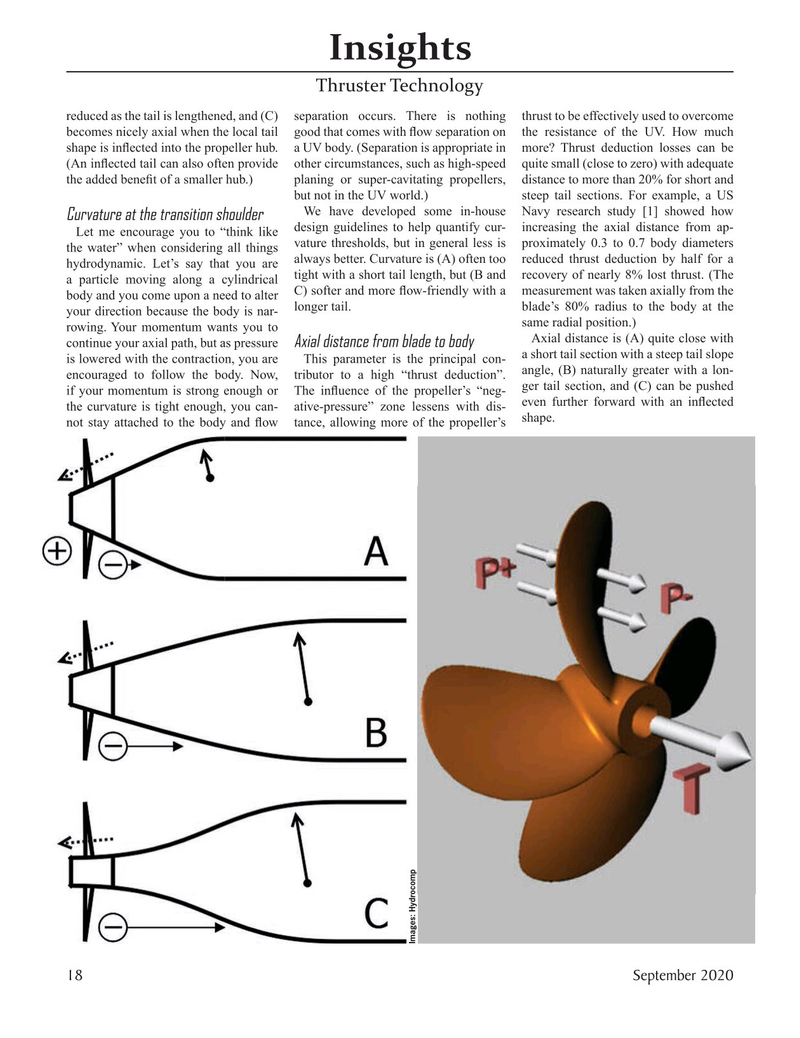
Page 18: of Marine Technology Magazine (September 2020)
Read this page in Pdf, Flash or Html5 edition of September 2020 Marine Technology Magazine
Insights
Thruster Technology reduced as the tail is lengthened, and (C) separation occurs. There is nothing thrust to be effectively used to overcome becomes nicely axial when the local tail good that comes with ? ow separation on the resistance of the UV. How much shape is in? ected into the propeller hub. a UV body. (Separation is appropriate in more? Thrust deduction losses can be (An in? ected tail can also often provide other circumstances, such as high-speed quite small (close to zero) with adequate the added bene? t of a smaller hub.) planing or super-cavitating propellers, distance to more than 20% for short and but not in the UV world.) steep tail sections. For example, a US
We have developed some in-house Navy research study [1] showed how
Curvature at the transition shoulder
Let me encourage you to “think like design guidelines to help quantify cur- increasing the axial distance from ap- the water” when considering all things vature thresholds, but in general less is proximately 0.3 to 0.7 body diameters hydrodynamic. Let’s say that you are always better. Curvature is (A) often too reduced thrust deduction by half for a a particle moving along a cylindrical tight with a short tail length, but (B and recovery of nearly 8% lost thrust. (The
C) softer and more ? ow-friendly with a measurement was taken axially from the body and you come upon a need to alter longer tail. blade’s 80% radius to the body at the your direction because the body is nar- same radial position.) rowing. Your momentum wants you to
Axial distance is (A) quite close with
Axial distance from blade to body continue your axial path, but as pressure a short tail section with a steep tail slope is lowered with the contraction, you are This parameter is the principal con- encouraged to follow the body. Now, tributor to a high “thrust deduction”. angle, (B) naturally greater with a lon- ger tail section, and (C) can be pushed if your momentum is strong enough or The in? uence of the propeller’s “neg- even further forward with an in? ected the curvature is tight enough, you can- ative-pressure” zone lessens with dis- not stay attached to the body and ? ow tance, allowing more of the propeller’s shape.
Images: Hydrocomp 18 September 2020
MTR #7 (18-33).indd 18 9/11/2020 8:32:01 AM

 17
17

 19
19
